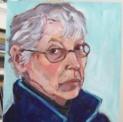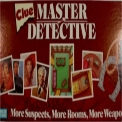Monday, January 24: The Scribbler
THEORY OF THE CRIME
by James Lincoln Warren
In science and in law, a theory is an explanation for observed phenomena. The theory of evolution, understood by most people to refer to Charles Darwin’s theory of speciation through natural selection, is a case in point; likewise Newton’s law of universal gravitation, which explains why and how objects accelerate as they fall. A lawyer’s theory of a case is his explanation of the evidence, the story that explains how a fingerprint appeared on a murder weapon and what it proves. Theories are not mere hypotheses. They must be supported by facts.
In the arts, theory means something a little different. Literary theory, for example, is a justification for the relevance of literary criticism—how a novel is constructed, for example, or how language is manipulated to maximize beauty and expressive power. Music theory is an explanation of how music works—in the language of harmony theory, twelve bar blues can be described as a particular progression of the tonic, subdominant, and dominant triads over twelve four-beat measures (I-I-I-I, IV-IV-I-I, V-V-I-I).
But like scientific theory, arts theory is evidentiary in nature. The theory of baroque musical counterpoint, for example, wasn’t invented in order to enable composers to write fugues, although it certainly helps do that, but as a means of explaining fugues that had already been composed. The time-honored phrase describing this is, “Theory follows practice.”
In the early 20th century, there was a big effort among composers to come up with the theory first and then to write music to conform to it. The most famous example of this is the “serial composition” invented by Arnold Schoenberg, sometimes called dodecaphonic or “atonal” music (although there is much “atonal” music that is not serial), which dispensed with scales and chromaticism in favor of a fixed progression of the twelve notes in the tempered scale. Triadic harmony was tossed out. Although it held the stage for decades among serious and intellectual composers, serial music was essentially a failure, because its cultural context was for all intents and purposes arbitrary and synthetic. In order to be meaningful, the arts must exist in a cultural context (which statement is itself a theoretical one)—if you don’t understand what art is trying to accomplish, the odds are overwhelming that you probably won’t appreciate it.
Children with no musical theoretical underpinnings can tell the difference between major and minor keys. If you tell them that minor keys sound sad and that major keys sound happy, and they will correctly discriminate between minor and major keys almost 100% of the time. The truth is that there is nothing inherently sad about minor keys or anything inherently happy about major ones, but we are culturally acclimated to associate plaintive songs with the minor key, and joyous songs with major keys.
Likewise, we crime writers usually have some theory at work when we’re telling stories. Distinctions of subgenre—hard-boiled, noir, traditional detective, cosy, procedural, etc.—are theoretical distinctions. The invention of the cosy, for example, is generally attributed to Agatha Christie, the creator of Miss Marple.
“A cosy,” I will explain when asked, “is a sentimental traditional detective story that features an amateur sleuth, usually a nosy single woman of a certain age, wherein all the violence occurs off stage, there are multiple suspects, and a ratiocinative solution based on fair-play clues is central, and which usually involves a I’m-sure-you’re-all-wondering-why-I-asked-you-here-tonight dénouement.”
The thing is, I don’t regard Miss Marple as cosy at all. For one thing, she is brutally unsentimental. For another, the mysteries she solves are not very far removed from the cases of Christie’s other major sleuth, Hercule Poirot, who is certainly not very cosy. The only things that really distinguish her from Sherlock Holmes (most of whose cases were also domestic) are gender and knitting in lieu of playing the violin. But she was so brilliantly original that she spawned an entire subgenre of imitators. She illustrates perfectly how theory follows practice.
Most of us, readers and writers alike, have some theory running in the back of our minds underpinning our tastes. (One of my favorite criticisms, attributed to Truman Capote speaking to Jack Kerouac, makes my point: “That’s not writing, Jack. It’s typing.”)
Adhering strictly to a theory can be a sure-fire way to write formulaic stories, but it can also assist a writer in speaking to his audience in a way that satisfies their expectations. This is why I say that most good writing, at least of short detective fiction, is a balancing act between convention and invention. My Treviscoe stories all pretty much follow a template, which always involves some footwork à la standard P.I. fare, a lot of physical evidence, and a crime or solution unique to the 18th century. Unlike hard-boiled private eye stories, though, Treviscoe stories are fair-play mysteries with a deductive solution. I guess the major character in our literature that he most closely resembles, at least in terms of plot, is Lord Peter Wimsey, although what I had in mind when I created him was more Sherlock Holmes. But you will note that in either case, I was calling on what had gone before.
Theoretically speaking, that is.





















I’ve also never found Miss Marple “cosy”. The Wind in the Willows and Paddington Bear are cosy, the 4:50 From Paddington is not — a strangling on a train, a dysfunctional family who largely loath each other, and a doctor who took an alternative Hippocratic Oath to other medical practitioners. Yes, Dame Agatha, very cosy! 🙂
What a pleasant surprise to see Robert Johnson’s smiling face on a Monday morning. Thanks.
And thanks for explaining what’s the problem with the argument that “evolution is only a theory.”
By coincidence I recently came up with a phrase I would like to see on a t-shirt: “Music Theory has never been PROVED.”
And yes, a lot of people don’t recognize how hardboiled Miss Marple is, so thanks for that as well.
My favorite Robert Johnson story, by the way. One of the Rolling Stone guitarists (either Keith Richard or Bill Wyman) said that when a friend urged him to listen to a recording of Johnson he wasn’t that impressed.
“Well, he’s okay, I guess. Who was the backup guitarist?”
“That was a solo.”
“…oh.”
Robert Johnson’s own death was a definately un-cozy mystery. And in 1938, there was no real-life Marple or Holmes to investigate the truth about his death by poisoning.
About thirty years ago, I asked a class of mystery enthusiasts to identify themselves as tough or cozy. At the time, the division was simpler than it is now. Cozy took in almost the whole area of classical detection, thus including both Poirot and Marple, plus Ellery Queen, John Dickson Carr, Dorothy L. Sayers, etc. The stories in the category were problem-centered, did not base their appeal on explicit violence or shock, though these elements might be present, and were generally expected to play fair with the reader. Jim’s definition is much narrower and includes what most people would think of as a cozy today with one exception: most of the writers in the tradition are not bothered too much with fair-play clues. I’ve often thought (and said in print) that if today’s cozy writers were really trying to emulate Agatha Christie, I would be reading a lot more cozies.
. . . and this shows why Jon Breen is one of the best respected men in our genre.
James, I agree, I agree!